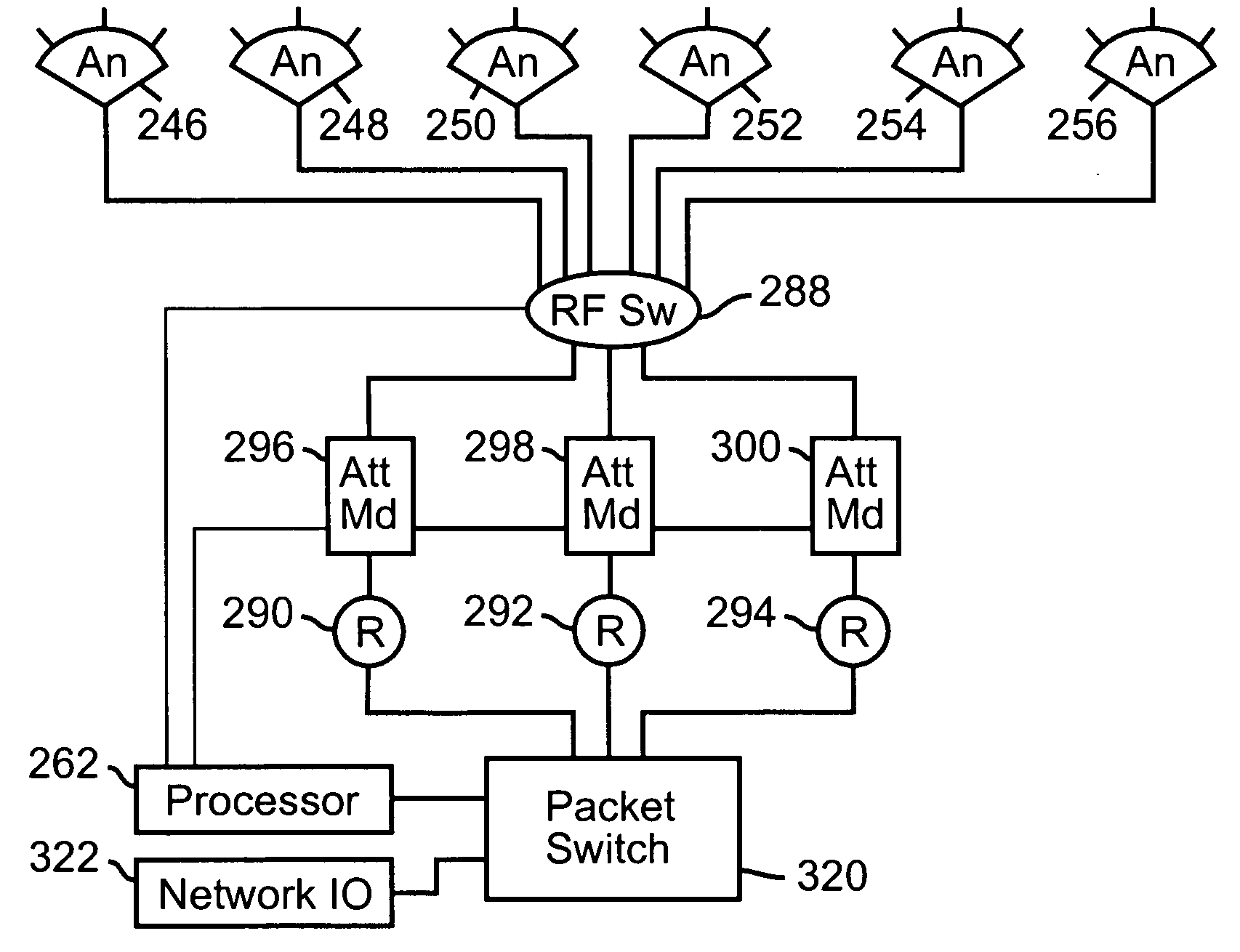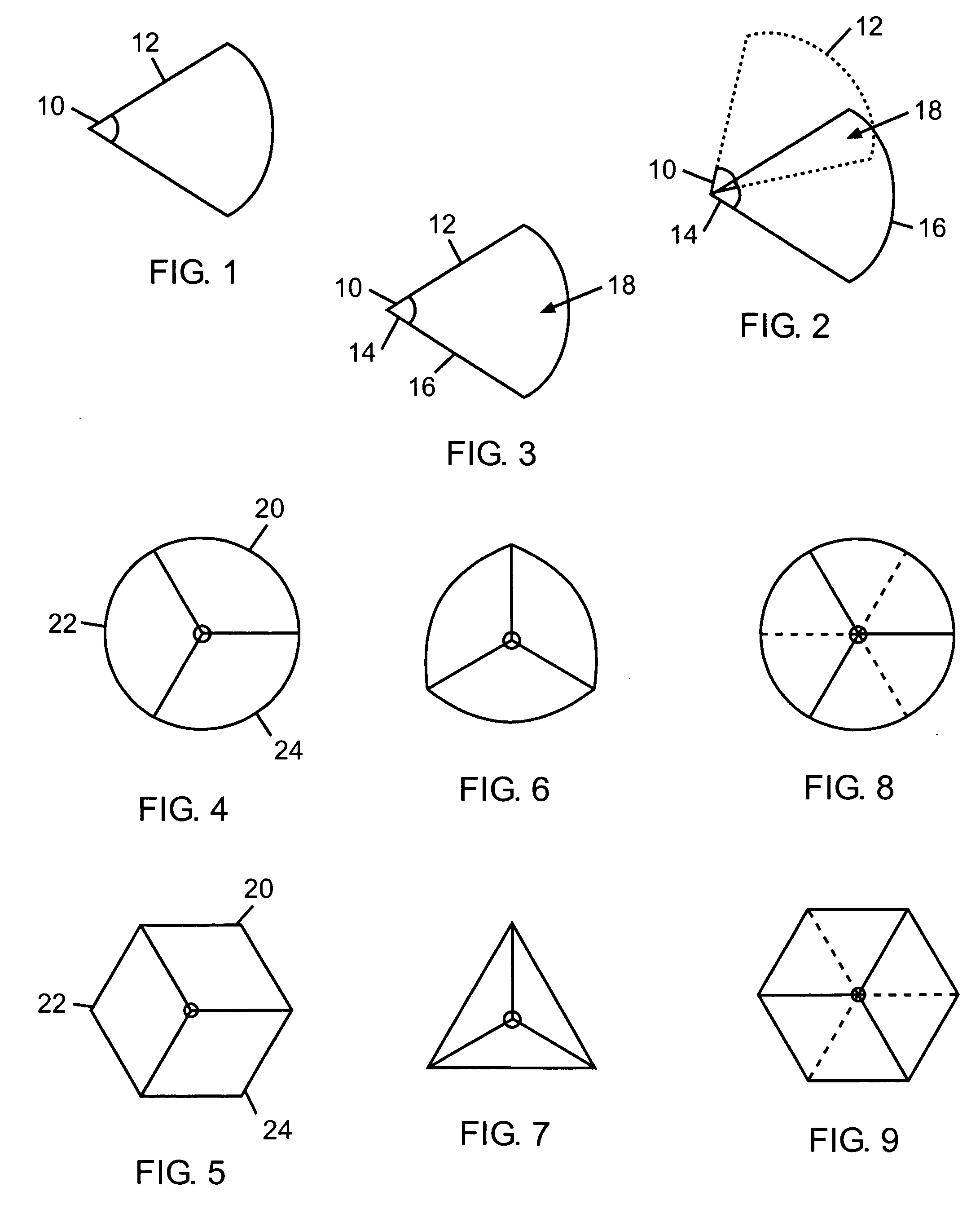Methods and apparatus for high throughput multiple radio wireless cells and networks
a wireless cell and high throughput technology, applied in the field of wireless communication, can solve the problems of limited wireless access points and devices in the current generation, and achieve the effect of reducing the number of wireless access points and devices
- Summary
- Abstract
- Description
- Claims
- Application Information
AI Technical Summary
Benefits of technology
Problems solved by technology
Method used
Image
Examples
fourth embodiment
[0161] The fourth attenuation module embodiment, referring to FIG. 62, is similar to the second attenuation module embodiment in that it has an ASD and an attenuation device in the receive path; however, the fourth embodiment may be different in that, for example, there is no RF switch. Generally, transmit path 224 and receive path 242 may be connected, for example, to an RF switch and / or to a radio capable of connecting to separate transmit and receive signals.
fifth embodiment
[0162] The fifth attenuation module embodiment, referring to FIG. 63, is similar to the first attenuation module embodiment in that it has an attenuation device in the transmit and receive paths, and an RF switch; however, the fifth embodiment may be different in that, for example, it does not have an ASD. Generally, transmit path 224 and receive path 230 may connect to, for example, an RF switch and / or another device capable of connecting to separate transmit and receive signals.
sixth embodiment
[0163] The sixth attenuation module embodiment, referring to FIG. 64, is similar to the second attenuation module embodiment in that it has an attenuation device in the receive path and an RF switch; however, the sixth embodiment may be different in that, for example, there is no ASD. Generally, transmit path 224 and receive path 230 may be connected, for example, to an RF switch and / or to a radio, and another device capable of connecting to separate transmit and receive signals.
PUM
 Login to View More
Login to View More Abstract
Description
Claims
Application Information
 Login to View More
Login to View More - R&D
- Intellectual Property
- Life Sciences
- Materials
- Tech Scout
- Unparalleled Data Quality
- Higher Quality Content
- 60% Fewer Hallucinations
Browse by: Latest US Patents, China's latest patents, Technical Efficacy Thesaurus, Application Domain, Technology Topic, Popular Technical Reports.
© 2025 PatSnap. All rights reserved.Legal|Privacy policy|Modern Slavery Act Transparency Statement|Sitemap|About US| Contact US: help@patsnap.com



